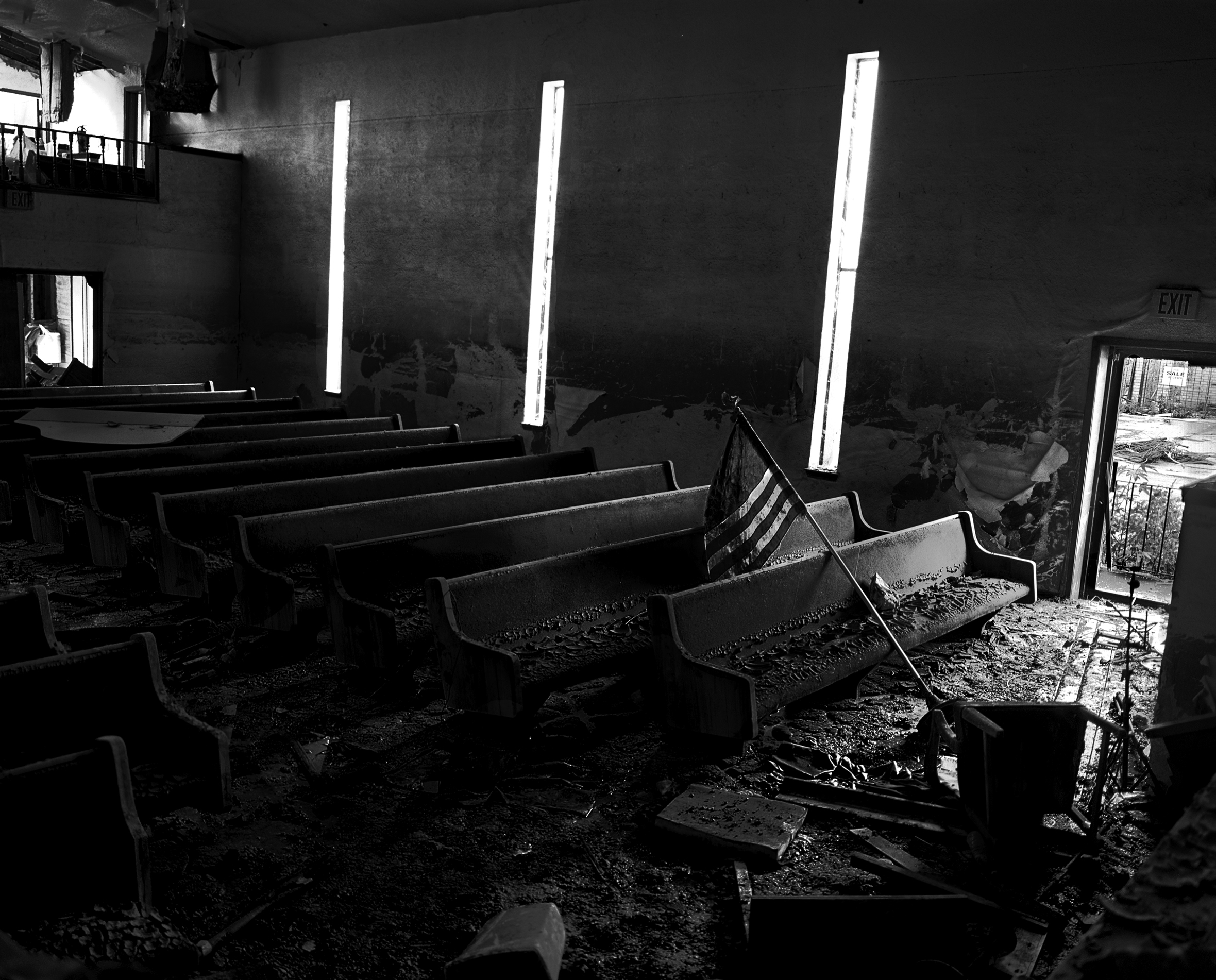I drove into New Orleans’ Ninth Ward a year and a half after Hurricane Katrina had left it in ruins. Friends who had been there had told me the devastation was “unbelievable.” I wondered what that meant — unbelievable.
My friends were wrong. The Ninth Ward, in its ruin, was believable, but only in the way certain dreams are believable — post–World War III dreams: Miles and miles of empty houses. No voices, no cars. An eerie silence except for the distant rumble of dump trucks, the occasional crunching of wood. Now and then a darkened limo, or a Katrina tour bus, would drive through. The initial gold rush of documentary photographers — pointing their cameras at overturned houses, cars in trees, and mountains of debris — was over. Dramatic spectacle had given way to pervasive loss, a condition far less tangible, and more difficult to photograph. I’m not sure what I felt about what I saw. Disbelief? To be honest, I wasn’t able to grasp the disaster. It was too large to be comprehended, especially by someone who didn’t live there.





